#tahr
Explore tagged Tumblr posts
Text

Nilgiri Tahr (Nilgiritragus hylocrius), male, family Bovidae, Eravikulam National Park, Kerala, India
ENDANGERED.
photograph by Sushant Jadhav
211 notes
·
View notes
Text

Kumar but Tahr
31 notes
·
View notes
Text

Signalis OC posting: Sterntaucher
Concept art style stuff with TAHR's room~ Attempted using some of Signalis' rooms as a color guide since I'm not super familiar with environment art
#signalis#signalis oc#signalis fanart#sterntaucher#TAHR#ocean draws#my art#Was a lot of fun drawing the layout and perspective for the room#plus the weathering and small details for the room
123 notes
·
View notes
Text
Australian Pokemon: non-natives
For this set of my fakemon set in the Goorda region, based on a combination of Australia and Aotearoa/New Zealand, I focused on non-native species. Both countries have a lot of introduced and invasive species to draw on for ideas. I previously made a regional Buneary and Lopunny based on invasive rabbits. Previous posts: regional standards, creepy lines, regional variants, birds, early-game standards, misc, misc, starter variants, starters.

First up is Sprigorse, the Long-Beard Pokemon, fairy/grass type. These Pokemon were introduced from a different region and have become an invasive species. Their bodies are made of wood and they wear crowns of flowers and long beards made of branches and leaves. Both the flowers and beards will spread seeds, growing foreign plants that outcompete natives. Sprigorse live in colonies in the forest and are led by the member with the longest beard. They are known to prank and attack travelers through the forest.
Sprigorse is based on two plants that are invasive in NZ: old man's beard and gorse. Both were brought in from Europe and are now outcompeting the native plants. Like the plants, Sprigorse is foreign import. I based it on a spriggan, a mythical creature from England, where both old man's beard and gorse are native. Spriggans were usually depicted as wisened old men and were said to inhabit wild places and were often malicious. Srigorse's name comes from "spriggan" and "gorse"
Next up is Tahrkid, the Ice Horn Pokemon, ice-type. Tahrkid's horns are made of ice and regrow stronger when broken, so they repeatedly smash their horns to strengthen them. They are highly dextrous and can leap between peaks and climb nearly vertical surfaces. Tahrkid was first introduced to Goorda from a region far away.
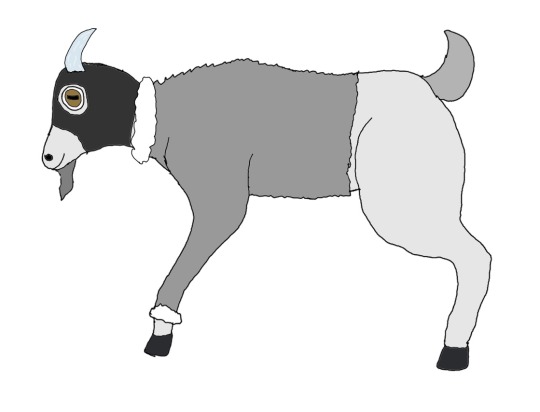
Tahrkid evolves to Yodhatahr, the Ice Horn Pokemon, ice/fighting type. Their horns are made from nearly indestructible ice, allowing them to pulverize boulders with a single headbutt. When two fight, the slam their horns together until one's horns break or it submits.
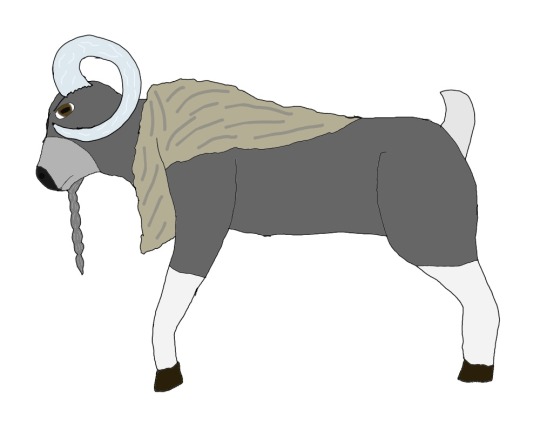
Tahrkid and Yodhatahr are based on a combination of mountain goats and the Himalayan tahr, a species of wild goat found in the Himalayas. Yodhatahr also has ram horns and Tahrkid appears to be wearing a coat and ski mask. Tahrs are an invasive species in NZ, where they can outcompete local herbivores in the mountains. The line's ability to climb nearly vertical surfaces is something real goats do and real goats also headbutt when fighting. Tahrkid's name comes from "tahr" and "kid" (juvenile goat) while Yodhatahr's name comes from "tahr" and "Yōd'dhā", the Nepalese word for "warrior". Presumably this line would originate from the Pokemon world's Himalayas and would therefore be known in the Pokemon version of Nepal.
The final line for this post starts with Dimpole, the Ball Pokemon, poison-type. Dimpole were introduced to Goorda from another region and have become an invasive species. They bounce and roll on their spherical bodies in such numbers that they coat the land during breeding season, causing a trip hazard for humans. They enjoy bouncing and being sent flying, so humans will hit them with sticks and golf clubs to get them out of the way.

Dimpole evolves to Foretitoad, the Toad Pokemon, poison-type. Foretitoad are an invasive species in Goorda. They leak toxins wherever they go, allowing them to reduce fertile fields to bare ground, while also making them too toxic for predators to eat. Females have spikes on their backs that they use to carry their eggs. When the young hatch, they use their paddle-shaped tails to send the young flying into new habitats.
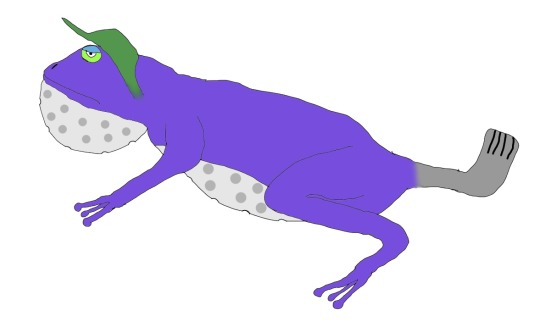
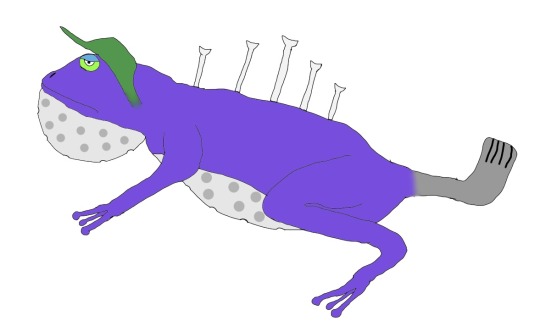
(Male on left and female on right)
The Dimpole line are based on cane toads and toad golf. Cane toads may be the most notorious invasive species in Australia. Because of how many there are, people have invented various ways to kill them, the most infamous being toad golf: hitting them with gold clubsPart of the reason cane toads are so invasive is because they're too poisonous for most native species to eat. Dimpole is tadpole merged with a golf ball while Foretitoad is a toad with a golf ball belly and throat bouch, gold visor shaped head crest, golf club shaped tail. and the females have spines shaped like golf tees. Also their eyes look like the logo of Golf Australia. Golf is also not originally from Australia and, like cane toads, is terrible for the environment. Dimpole come from "dimple" and "tadpole" while Foretitoad comes from "fore", "fortitude", and "toad". @reikomania helped me come up with the design for this line.
#pokemon#fakemon#original pokemon#australia#new zealand#aotearoa#gorse#old man's beard#spriggan#mountain goats#himalayan tahr#tahr#cane toad#tadpole#golf#golf ball#art#new artist#artists on tumblr#drawing#digital art
11 notes
·
View notes
Text
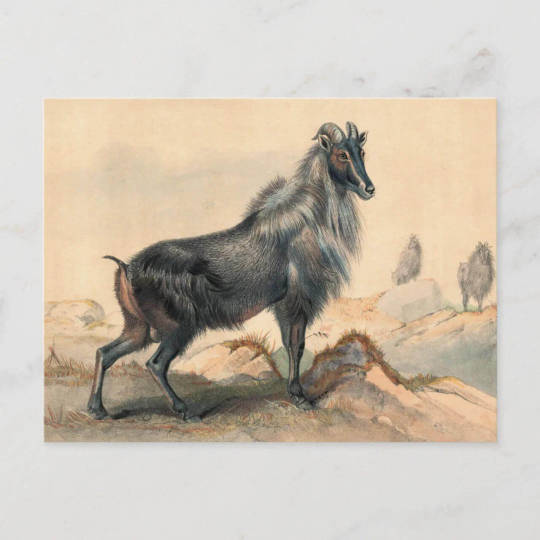
The Thar Goat by Joseph Wolf Postcard
Animal Illustration: Designs & Collections on Zazzle
#joseph wolf#illustration#vintage illustration#animal illustration#nature illustration#wildlife illustration#postcard#postcards#postcard art#animals#bovids#himalayan tahr#hemitragus jemlahicus#tahr
3 notes
·
View notes
Note
is there an underrated bovine that you like?


Koupreys :] They are sadly [presumed] extinct but they are/were cool... The keratin of their horns is weaker or smthn so it frays easier at the tips, so they have cool little palm tree horns
241 notes
·
View notes
Text

Nilgiri tahr Nilgiritragus hylocrius
Observed by alenalex, CC BY-NC
35 notes
·
View notes
Text
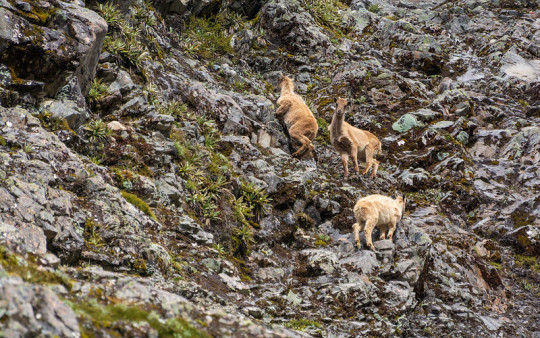
A group of Himalayan tahr (Hemitragus jemlahicus) near Cameron Glacier, Canterbury, Aotearoa.
by Jake Osborne
#himalayan tahr#bovines#hemitragus jemlahicus#hemitragus#bovidae#artiodactyla#mammalia#chordata#wildlife: aotearoa#wildlife: oceania#invasive species
70 notes
·
View notes
Text

parker
he says he had nothing to do with it, but i dunno if i believe him…
#hfjone#hfjone parker#object shows#object show community#furry#design tag#species: himalayan tahr#i felt like something that could climb would be fitting for him#since he goes spelunking for fun lmao
33 notes
·
View notes
Text

Im organizing my retired characters on toyhouse and feeling sentimental about this guy. their kinda getting a resurrection, this is the first time ive drawn them in nearly 5 years 😅 i miss this fluffy loser
#I made this character in 2014#They were my first ever fursona and then i replaced them in 2016 with a rabbit#Then had the two coexist up until 2020 when they were both retired and i was fursonaless for a year#Then made my current monkey Bo#But gosh its missing my goat hours#They cant be killed lol#Furry#Furry art#Goat#My art#anthro art#fursona#Himalayan tahr
7 notes
·
View notes
Text


#my polls#polls#tumblr polls#animal polls#animals#poll blog#arabian tahr#mammal#endangered#arabian wildlife#endangered species
18 notes
·
View notes
Text



Nilgiri Tahr | krakatao
3 notes
·
View notes
Text

#HimalayanTahr Adapted to the rocky slopes of Everest, the Himalayan Tahr is a wild goat-like ungulate. Because of
2 notes
·
View notes
Text
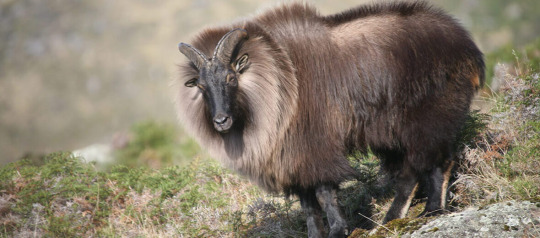
Himalayan tahr (Hemitragus jemlahicus)
Another relative of goats, the tahr is found throughout the Himalayas. In winter, they grow a thick coat of fur and migrate further down the mountains to avoid heavy snow. Tahrs have been introduced to several other countries, and have become a destructive invasive species in New Zealand.
#markhors-menagerie#animal facts#animals#biology#fun facts#ungulates#even toed ungulates#ruminants#bovidae#Caprinae#Himalayan tahr
4 notes
·
View notes
Text
i love glaives. what if we put a sword on a stick. hell yes absolutely excellent idea
#wanted tahre to be a classic sword-and-shield warrior at first#but i have embraced the glaive and the glory that is PAM + sentinel#origpost#arctic plays bg3
2 notes
·
View notes
